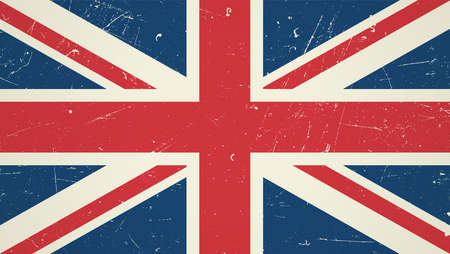Post-War Beginnings: Rising from the Rubble
In the aftermath of World War II, Britain faced a severe housing crisis. Much of the nation’s urban landscape had been scarred by bombings, leaving countless families displaced and entire neighbourhoods reduced to rubble. The urgent need for new homes sparked a wave of innovation in British architecture and urban planning. Prefabricated houses—fondly known as “prefabs”—became symbols of hope and ingenuity, offering quick, affordable shelter while reflecting a spirit of resilience. These compact, practical dwellings dotted cities and towns across the country, providing modern comforts that contrasted starkly with pre-war housing stock. Alongside prefabs, the rise of council estates redefined suburban and urban living for generations. Local authorities took on the mantle of large-scale building projects, creating communities designed to foster social cohesion and wellbeing. Wide green spaces, communal facilities, and streamlined modernist designs marked a clear departure from Victorian terraces. This era laid the foundations for Britain’s evolving relationship with home, setting in motion trends that would continue to shape its domestic landscape for decades to come.
2. The Swinging Sixties and Seventies: Embracing Modernity
The transformative decades of the 1960s and 1970s marked a vibrant shift in British home design, mirroring the cultural revolution sweeping across the nation. This era saw the rise of mid-century modernism, with British architects and designers drawing inspiration from international movements while embracing their own unique flair. Clean lines, organic forms, and a celebration of functionality began to replace the ornate details of previous generations.
Mid-Century Modernism: A New Design Language
British homes in this period were deeply influenced by mid-century modern aesthetics. The focus shifted towards uncluttered spaces and an honest expression of materials. Furniture became sleeker—think G-Plan sideboards, Ercol dining sets, and iconic Egg chairs—reflecting both elegance and practicality.
Innovative Materials and Technologies
This era was also notable for innovation in building materials. Homes began to feature:
| Material | Common Usage | Key Benefits |
|---|---|---|
| Plywood | Furniture & Built-ins | Lightweight, affordable, versatile |
| Aluminium | Window frames & doors | Durable, modern aesthetic |
| Laminates & Plastics | Worktops, cabinetry, décor accents | Easy maintenance, bold colours, flexibility in design |
| Glass (Large Panes) | Patio doors, windows | Maximises light, blurs indoor-outdoor boundaries |
The Rise of Open-Plan Living Spaces
Perhaps the most lasting legacy of the Sixties and Seventies is the open-plan living concept. Traditional compartmentalised rooms gave way to interconnected kitchen-dining-living areas that encouraged social interaction and family togetherness—a significant departure from Victorian formality.
Everyday Life Reimagined
This new spatial arrangement allowed for greater flexibility in how Britons used their homes. Entertaining friends became more informal; children could be supervised more easily; and natural light flowed throughout interiors. The open-plan layout became a hallmark of modern British living, setting the stage for future innovations in home design.
![]()
3. Thatcher’s Britain: A New Era of Ownership
The 1980s marked a radical shift in British housing, spearheaded by Margaret Thatcher’s government and its flagship ‘Right to Buy’ scheme. This policy fundamentally redefined the country’s relationship with homeownership, offering council house tenants the opportunity to purchase their homes at discounted rates. The resulting surge in owner-occupation was unprecedented, transforming not only the physical landscape of British suburbs but also the social fabric of neighbourhoods.
Empowering a Generation
The Right to Buy initiative empowered millions of working-class families, turning renters into proud homeowners for the first time. This ownership revolution instilled a new sense of personal investment and pride, catalysing renovations and encouraging individual expression through home design. The aesthetic of British streetscapes evolved as former council houses were personalised—front gardens bloomed, doors were repainted, and interiors began to reflect unique tastes rather than uniform standards.
Redefining Community Identity
Neighbourhood identities also underwent transformation. Where once entire estates shared a collective identity as council tenants, the patchwork of owned and rented homes introduced a more diverse sense of community. Some critics argue this led to fragmentation; however, many see it as fostering ambition and social mobility. The idea of “an Englishman’s home is his castle” gained renewed relevance, echoing through everyday life and inspiring a wave of DIY culture that still shapes British interiors today.
Long-Term Implications
While Right to Buy fuelled aspirations and improved living standards for many, it also contributed to new challenges: reduced social housing stock and increased pressure on affordability. Nevertheless, the transformative impact on homeownership remains evident in modern Britain’s eclectic suburban landscapes—a testament to an era when personal space became a canvas for self-expression, rooted in the nation’s evolving values.
4. The Rise of Eco-Conscious Living
The modern British home has undergone a remarkable transformation, especially in its approach to sustainability and environmental responsibility. As society’s awareness of climate change and resource scarcity grows, eco-conscious living has emerged as a defining feature of contemporary British housing. Homeowners and designers alike are now prioritising green principles, resulting in spaces that are both beautiful and efficient.
Eco-Conscious Features in British Homes
| Feature | Description | Common Applications |
|---|---|---|
| Energy Efficiency | Reducing energy consumption through insulation, double glazing, and efficient heating systems. | Upgraded windows, smart thermostats, underfloor heating. |
| Sustainable Materials | Use of recycled, reclaimed, or responsibly sourced building materials. | Bamboo flooring, recycled glass worktops, FSC-certified timber. |
| Renewable Energy Integration | Adoption of solar panels and ground source heat pumps to minimise reliance on fossil fuels. | Solar roofs, air source heat pumps, battery storage solutions. |
| Water Conservation | Efficient water management through low-flow fixtures and rainwater harvesting. | Dual-flush toilets, water butts, permeable paving for gardens. |
| Green Spaces & Biodiversity | Enhancing biodiversity by incorporating green roofs, native planting, and wildlife-friendly gardens. | Living walls, pollinator-friendly landscaping, bird boxes. |
The Shift in Homeowner Priorities
A significant cultural shift can be observed as British homeowners move away from traditional notions of luxury towards values that balance comfort with ecological responsibility. This change is reflected in the rise of Passivhaus standards and the popularity of retrofitting older properties to improve their environmental performance—an essential step given the UK’s abundance of period homes. The focus is no longer solely on aesthetics; instead, it encompasses the wellbeing of inhabitants and the planet alike.
Government Initiatives and Incentives
The government’s introduction of schemes such as the Green Homes Grant and Energy Company Obligation (ECO) has accelerated this transition. These programmes encourage households to adopt greener technologies while reducing costs. Local councils across the UK are also offering incentives for installing solar panels or upgrading insulation, further embedding sustainability into the DNA of British home design.
The New Aesthetic: Where Beauty Meets Sustainability
Sustainability in modern British homes does not mean compromising on style. Today’s eco-friendly designs embrace natural light, open-plan layouts, and tactile materials to create inviting spaces that foster both connection and tranquillity. The result is an evolving aesthetic—one where environmental stewardship and refined design sensibilities exist in perfect harmony. As we look ahead, it is clear that eco-conscious living is not just a trend but an integral part of the ongoing evolution of British homes.
5. Designing for Contemporary Living
The modern British home is a testament to adaptability, reflecting the shifting priorities of its inhabitants. In recent years, the surge in remote work has transformed living spaces across the UK, blurring the lines between professional and personal environments. Homeowners are increasingly seeking flexible layouts that can accommodate both productive work zones and comfortable retreats. The traditional concept of distinct rooms is giving way to open-plan designs, where kitchens flow seamlessly into living areas, fostering connectivity and a sense of spaciousness.
British interiors now emphasise natural light, with expansive windows and bi-fold doors bringing the outdoors in—a nod to the country’s appreciation for its gardens and green spaces. Neutral palettes combined with tactile materials like timber and stone evoke a calming atmosphere while remaining practical for busy lifestyles. The demand for multifunctional furniture is also on the rise, allowing even compact London flats to serve multiple purposes without sacrificing style.
Beyond aesthetics, sustainability has become an integral part of contemporary home design. Energy-efficient glazing, underfloor heating, and eco-friendly insulation are just some of the ways British homes are evolving to meet environmental concerns. Ultimately, today’s interiors are less about strict formality and more about creating fluid, light-filled spaces that support wellbeing and flexibility—capturing the spirit of modern British life.
6. Heritage Meets Innovation
The story of modern British homes is not just about change—it’s a dialogue between the cherished past and the dynamic present. As we continue to evolve, homeowners and designers are increasingly considering how to balance the preservation of Britain’s rich architectural heritage with the integration of cutting-edge technology and contemporary style.
Preserving Characterful Architecture
Many British homes, from Victorian terraces to post-war semis, boast period features such as ornate cornices, sash windows, or exposed brickwork. These elements lend each home a unique character that connects us to our collective history. Conservation efforts ensure these details are maintained, celebrating craftsmanship and storytelling through built form.
Embracing Modern Comforts
Alongside preservation, there is a growing appetite for innovation. Smart home systems—think intelligent heating controls or integrated lighting—are seamlessly woven into older structures. Eco-friendly upgrades like triple glazing and solar panels help reduce environmental impact without compromising on traditional aesthetics.
The Art of Sensitive Integration
The British approach favours sensitivity: new additions are designed to complement rather than overshadow original architecture. For example, glass extensions provide light-filled living spaces while framing historic facades, and minimalist interiors highlight period features by creating a calm backdrop for them to shine.
Looking Forward
This careful balancing act ensures that British homes remain relevant and inspiring. By respecting the stories embedded in their walls while embracing the possibilities of modern living, we create spaces that are both timeless and forward-thinking—true reflections of Britain’s evolving design identity.


